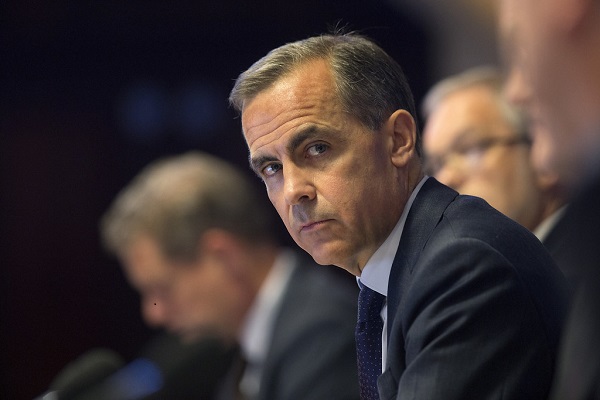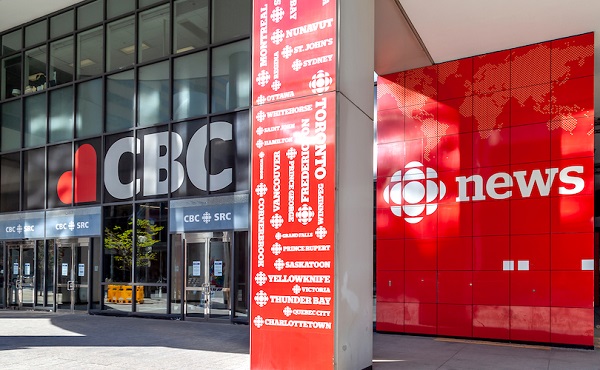Also Interesting
Three years into its existence, the Canadian Elite Basketball League includes more teams than the CFL

Accomplishments of the CEBL
It was three years ago when the CEBL first opened its doors as a six-team enterprise. Upon its first year, the league felt they could add a seventh club, in Ottawa. Then came Covid-19. It could have destroyed the new endeavour, had it not been for the commissioner and former CFL receiver Mike Morreale. In the summer of 2020, Morreale organized a two-week contest in St. Catharines, Ont., to allow CEBL to crown a champion. Thanks to the resulting boost from that championship run, in 2021, the CEBL again had a complete and steady schedule.
In 2022 the CEBL has added the Montreal Alliance, the Scarborough Shooting Stars and the Newfoundland Growlers. Just like that
The league continues to expand. After the addition of clubs in Toronto, Montreal, and St. John’s, the CEBL locations are now spread from Langley, B.C. to the east of the country. So now it can truly be called a national league. In fact, there are now 10 teams, making the CEBL the largest professional sports league in Canada. That’s more Canadian based teams than the NHL (7), the NBA (1), and MLB (1) combined! It also makes the league larger than the CFL.
The Scarborough (Toronto) Shooting Stars included a rap celebrity. J. Cole (Jermaine Cole) signed a contract with Scarborough, along with former local NBA star Jamaal Magloire as an executive. With J. Cole, there’s a trick component to signing a 37-year-old with insignificant experience consisting of three rounds last year in Rwanda. It is also uncertain how available he is going to be, as the artist has tour dates starting with June 10 — only five games into the season. But his acquisition has already attracted a lot of media attention. You can learn more about players and teams in different kinds of sports, and place bets on them online at https://bookmaker-ratings.net.za/bonuses/ , follow the link to learn about bonuses.
CEBL lost its Michael Jordan. Three years in a row Xavier Moon earned the CEBL Player of the Year prize. The American guard (Now with the LA Clippers) also directed Edmonton to the title in both of the last two seasons and accepted Finals MVP honours. He’s one of the CEBL players who leaped to the NBA during the last season as it grappled with COVID-affiliated problems. Another one is Lindell Wigginton, the Canadian Player of 2021, who has joined the Milwaukee Bucks upon exiting Hamilton. While losing such stars is sad, at the end of the day it might have a positive effect on the CEBL as it proves to players and fans the league can serve as a gateway to the NBA.
A new Moon might be rising. Since the departure of their celebrity, Edmonton may rely more on the forward Jordan Baker, winner of the 2020 Canadian Player of the Year award, who got 14.9 points and 9.4 rebounds on average last season. Kadre Gray is another powerful Canadian, previously a Laurentian U Sports star who averaged 15.3 points last year and 4.6 assists for Ottawa and is now part of the Fraser Valley Bandits. Guelph’s Cat Barber can take over the title, an American guard who averaged 17.6 points last season before getting a short break with the Atlanta Hawks.
The Elam Ending is still a thing. For years basketball geeks have been telling the NBA to embrace this inspiring way of ending matches. It removes the irritating custom of the losing team purposely fouling when the game is coming to an end. The NBA successfully tried it in 2020 at its All-Star Game, but they have not had the courage to try it in significant games. The CEBL has been doing it since 2020.
Also Interesting
Exploring All You Need to Know About Online Casino Games: A Comprehensive Guide to Entertainment, Strategy, and Winning Potential in the Digital Age

From a digital novelty, online casino games have evolved into a fast-growing worldwide sector combining fun, strategy, and creativity. Millions of individuals from the comfort of their homes—or perhaps on their phones—can now access what was only found in glitzy real casinos. The online casino scene has something for everyone from spinning the reels of graphically beautiful slot machines to engaging in live dealer blackjack or poker games.
Driven by technical developments, easy-to-use interfaces, and the excitement of possible losses, online casino games and bonuses available at Bonus.ca keep becoming more and more popular. Knowing the basics and investigating the range of possibilities will enable you to maximize your experience regardless of your level of expertise or simple interest in how it all works. The excellent news is that these sites provide variable betting limits, entertaining themes, interactive elements that keep the gameplay interesting, and a wide spectrum of interests catering to different tastes.
Understanding the Variety of Games
There are several game kinds in the broad and varied online casino realm meant to entertain and challenge players in different ways. Among the most often used types are slot games, table games, live dealer experiences, and more recent hybrid forms with skill-based components.
Because of its simplicity, vibrant colors, and frequently large prizes, slot games remain a favorite. Beginning players would find these games perfect since they demand little to no experience to play. Particularly themed slots let players enter many worlds—from simple fruit machines to space exploration to ancient Egypt.
Roulette, blackjack, and baccarat are among the table games with a more strategic edge where understanding of odds and probability could increase your chances of winning. For example, blackjack pays players who know fundamental techniques and whether to hit, stand, or double down.
Combining digital ease with the authenticity of real-time action, live dealer games have changed the online casino experience. By use of high-definition streaming, players can engage with professional dealers, therefore reintroducing the human aspect into online gaming. Those who value the social component of conventional casinos especially find great appeal in this structure.
Key Benefits of Playing Online Casino Games
One of the biggest appeals of online casino games is the convenience they offer. You can log in and play at any time, from almost anywhere, and there’s a wide range of stakes available to suit all budgets. Additionally, these platforms often include bonuses and promotions that boost your starting bankroll, giving you more chances to win.
- Accessibility and Flexibility: No need to travel or dress up—online casinos bring the games to you. Most platforms are optimized for mobile devices, making it easy to enjoy a quick spin or hand on the go.
- Game Variety: Whether you love fast-paced action or slow, strategic gameplay, online casinos offer hundreds—sometimes thousands—of options.
- Bonuses and Free Plays: New players are often welcomed with generous bonuses, and loyal players can enjoy ongoing promotions, cashback offers, and VIP programs.
- Learning Tools: Many online casinos provide demo versions of games, allowing you to practice and understand rules without risking real money. Tutorials and strategy guides are also readily available.
For those new to online casino gaming, these benefits help lower the barrier to entry while keeping the experience fun, safe, and rewarding.
Playing Responsibly: A Key to Long-Term Enjoyment
Even while online casino games can be rather entertaining, one should play with moderation. Good gaming habits guarantee that the experience stays fun and does not turn into a financial or emotional weight-bearing load. To help users keep under control, most respectable systems incorporate tools including deposit limitations, loss tracking, and self-exclusion capabilities.
Furthermore, easy but powerful techniques to enjoy the games without worry are knowing your limitations and following a budget. See gaming as an entertainment value rather than a means of income; this change of perspective will greatly affect the degree of gratification your experience will bring.
Another vital consideration is education. Knowing the house edge, game volatility, and fundamental blackjack or poker techniques will boost your confidence and increase your playing length. The experience gets more fun and maybe profitable the more informed you are.
The Role of Technology in Enhancing Gameplay
Technological innovation plays a significant role in making online casino games more immersive and secure. High-definition graphics, mobile-friendly designs, and real-time data analytics allow for seamless gameplay and better user experiences. Many platforms now use Random Number Generators (RNGs) to ensure fairness in games like slots and roulette, while advanced encryption techniques protect your financial and personal data.
Live dealer games benefit from streaming technology and multi-camera angles, providing a professional and dynamic setting that rivals physical casinos. Some platforms have even begun integrating augmented reality (AR) and virtual reality (VR) into their games, hinting at an even more interactive future.
- Secure Payment Options: Online casinos support a range of trusted payment methods, including mobile wallets, bank transfers, and even cryptocurrencies in some cases.
- Mobile Compatibility: With responsive design and dedicated apps, you can enjoy the full suite of casino games from your smartphone or tablet.
- Personalization: Algorithms track your favorite games and offer personalized recommendations, promotions, and rewards tailored to your preferences.
- Gamification Features: Leaderboards, achievements, and missions turn gaming into a more engaging and community-driven experience.
All these technological improvements are geared toward enhancing user satisfaction and making gameplay more dynamic and personalized.
Also Interesting
Top Used Ford SUVs for Families and Adventurers

Finding the perfect SUV that balances comfort, safety, and adventure-ready performance can be a challenge, but Ford’s lineup of used SUVs offers some of the best options available. Whether you need a spacious vehicle for your growing family or an all-terrain companion for weekend getaways, there’s a Ford SUV to match your lifestyle. Let’s explore the top choices that deliver reliability, versatility, and affordability.
What to Look for in a Used Ford SUV?
Before diving into specific models, it’s essential to know what features matter most when shopping for a used Ford SUV. Here are key factors to consider:
● Safety Features – Look for models equipped with Ford Co-Pilot360, which includes automatic emergency braking, blind-spot monitoring, and adaptive cruise control.
● Reliability and Maintenance Costs – Research common issues and ensure the SUV has a solid maintenance history.
● Fuel Efficiency – Choose a model that aligns with your commuting or road trip needs.
● Cargo and Passenger Space – Ensure the SUV has enough room for your family, gear, and pets.
● Off-Road Capability – If adventure is your goal, opt for models with all-wheel drive (AWD) or four-wheel drive (4WD).
If you’re ready to explore available options, check out https://stampedeauto.com/used-ford/ for a selection of quality used Ford SUVs.
1. Ford Escape – The Compact Family Favorite
The Ford Escape is a practical, fuel-efficient SUV perfect for small families and urban explorers. With a history of strong safety ratings and a spacious interior, it strikes a balance between convenience and performance.
Why Choose a Used Ford Escape?
● Fuel Efficiency – Older models with the 1.5L EcoBoost engine offer up to 30 MPG highway.
● User-Friendly Technology – Equipped with Ford SYNC infotainment and smartphone connectivity.
● Versatile Cargo Space – Fold-flat rear seats provide ample room for groceries, sports equipment, or luggage.
● Best Model Years to Buy – 2018-2021 models have modern safety features and improved fuel economy.
2. Ford Edge – The Perfect Mid-Size Balance
For those who want more space without stepping into full-size territory, the Ford Edge is an ideal midsize SUV. It offers a roomy two-row layout, strong engine options, and a smooth ride.
Why Choose a Used Ford Edge?
● Spacious Cabin – More rear legroom than many competitors.
● Powerful Engine Choices – Available 2.0L EcoBoost and 2.7L V6 for extra performance.
● Advanced Safety Features – Includes lane-keeping assist and pre-collision assist in newer models.
● Best Model Years to Buy – 2019-2022 models offer a modern design and strong reliability.
3. Ford Explorer – The Ultimate Family SUV

If you need three rows of seating without sacrificing performance, the Ford Explorer is a top contender. It’s an excellent SUV for large families and those who need extra passenger capacity.
Why Choose a Used Ford Explorer?
● Seating for Up to Seven – Third-row seats offer flexibility for larger families.
● Strong Towing Capacity – Can tow up to 5,000 lbs when properly equipped.
● Powerful Yet Efficient – The 2.3L EcoBoost engine delivers a balance of power and fuel savings.
● Best Model Years to Buy – 2017-2022 models feature advanced driver assistance and improved comfort.
4. Ford Expedition – The Full-Size Powerhouse
For those who need maximum space and towing capability, the Ford Expedition is a standout choice. It’s built for large families, cross-country road trips, and hauling heavy loads.
Why Choose a Used Ford Expedition?
● Room for Eight – A full-size SUV with unmatched passenger space.
● Towing King – Can tow up to 9,300 lbs, ideal for boats and trailers.
● High-Tech Features – SYNC 3 infotainment and multiple USB ports keep everyone connected.
● Best Model Years to Buy – 2018-2022 models have turbocharged efficiency and refined interiors.
5. Ford Bronco Sport – The Adventurer’s Compact Choice
For outdoor enthusiasts, the Ford Bronco Sport is a rugged compact SUV designed for off-road fun while still being a practical daily driver.
Why Choose a Used Ford Bronco Sport?
● Trail-Ready Performance – Standard AWD and off-road modes for different terrains.
● Compact Yet Spacious – Clever storage solutions for camping and gear.
● Turbocharged Engines – 1.5L and 2.0L EcoBoost options for strong performance.
● Best Model Years to Buy – 2021-2023 models provide the latest tech and rugged styling.
Before purchasing a used Ford Bronco Sport, be sure to check for any recalls. For example, certain Ford Bronco Sport and Maverick models have been recalled to fix faulty batteries. To learn more about this, visit Consumer Reports’ coverage on the recall.
Buying Tips: How to Get the Best Deal on a Used Ford SUV
● Certified Pre-Owned (CPO) Options – Ford’s CPO program includes extended warranties and inspections.
● Check Vehicle History Reports – Avoid SUVs with major accidents or unresolved recalls.
● Test Drive and Inspection – Always inspect brakes, transmission, and suspension.
● Compare Prices – Look at local dealerships and online marketplaces for the best deals.
● Negotiate Smartly – Research market value and be prepared to walk away if needed. It also helps to choose a used car dealer with transparent pricing and a solid reputation.
Conclusion
Choosing the right used Ford SUV depends on your specific needs. If you want fuel efficiency and city-friendly size, the Escape is a great choice. For those needing extra space and towing power, the Explorer or Expedition are top contenders. If adventure is a priority, the Bronco Sport
offers unbeatable off-road capability.
No matter which Ford SUV you choose, you’ll get a reliable vehicle that blends comfort, technology, and performance—without the high price tag of a new model. Start your search today and find the perfect used Ford SUV for your family or next adventure.
-

 Alberta17 hours ago
Alberta17 hours agoPremier Danielle Smith responds to election of Liberal government
-

 Business2 days ago
Business2 days agoNet Zero by 2050: There is no realistic path to affordable and reliable electricity
-

 Business2 days ago
Business2 days agoOttawa’s Plastics Registry A Waste Of Time And Money
-

 Addictions2 days ago
Addictions2 days agoFour new studies show link between heavy cannabis use, serious health risks
-

 COVID-192 days ago
COVID-192 days agoFormer Australian state premier accused of lying about justification for COVID lockdowns
-

 Also Interesting2 days ago
Also Interesting2 days agoTop Used Ford SUVs for Families and Adventurers
-

 Automotive1 day ago
Automotive1 day agoMajor automakers push congress to block California’s 2035 EV mandate
-

 International2 days ago
International2 days agoConclave to elect new pope will start on May 7





